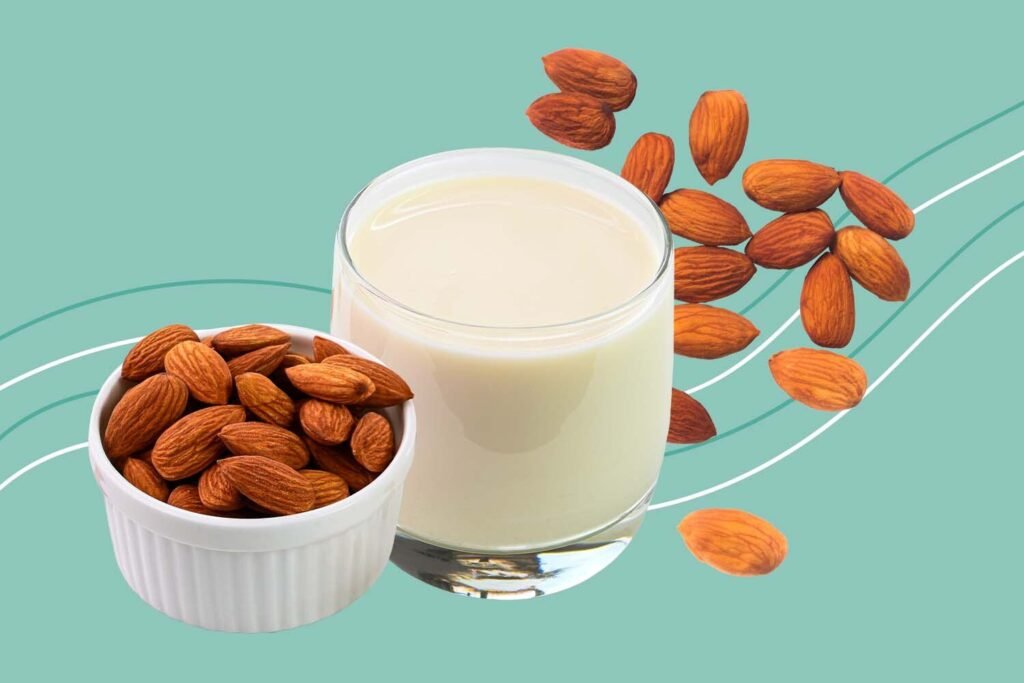How to Make Buttermilk with Almond Milk: A Simple and Effective Hack
When you’re following a dairy-free or vegan diet, finding suitable substitutes for ingredients like buttermilk can seem challenging. But don’t worry! With a simple hack, you can easily make buttermilk with almond milk, which is a perfect solution for those looking to avoid dairy without compromising on flavor or texture.
Buttermilk is often used in baking, frying, and even salad dressings. It provides a tangy, slightly acidic flavor and a creamy texture that makes it an essential ingredient in many recipes. However, since buttermilk is made from dairy, it’s not suitable for people who are lactose intolerant, vegan, or following other dairy-free diets.
Luckily, almond milk makes an excellent base for creating a dairy-free version of buttermilk. Let’s dive into how you can make buttermilk using almond milk and a few simple ingredients.
Why Use Almond Milk for Buttermilk?
Almond milk is a popular dairy alternative because it is creamy, neutral in flavor, and versatile. It works well in both sweet and savory dishes, making it a perfect substitute for regular milk or cream. It’s also rich in vitamins and low in calories, which is ideal for those who are health-conscious.
When combined with an acid (like vinegar or lemon juice), almond milk mimics the tanginess and acidity of traditional buttermilk. This combination also helps create a curdling effect, which is characteristic of buttermilk’s thick and creamy texture. This makes it an excellent substitute in recipes that call for buttermilk.
How to Make Buttermilk from Almond Milk: The Simple Hack
Making buttermilk from almond milk is incredibly simple, and it takes less than five minutes. Here’s the step-by-step process:
Ingredients:
- 1 cup of unsweetened almond milk (or sweetened if that’s all you have on hand)
- 1 tablespoon of white vinegar or lemon juice (you can also use apple cider vinegar)
Instructions:
- Pour the Almond Milk
Start by pouring 1 cup of unsweetened almond milk into a measuring cup or a bowl. Be sure to use unsweetened almond milk to avoid adding extra sugar to your buttermilk. - Add the Acid
Add 1 tablespoon of white vinegar or lemon juice to the almond milk. Both vinegar and lemon juice are common acidic ingredients that mimic the tangy flavor of buttermilk. Apple cider vinegar is also a great option, giving a slightly different flavor but still working well. - Stir and Let It Sit
Stir the mixture gently to combine the almond milk and acid. Then, let the mixture sit for about 5 to 10 minutes. You’ll notice that the almond milk begins to thicken slightly, and you might even see small curdles forming. This is a sign that your buttermilk substitute is ready! - Use Immediately
Once the almond milk has thickened and curdled a bit, your dairy-free buttermilk is ready to use. You can now use it in place of regular buttermilk in any recipe that calls for it, whether for pancakes, muffins, or fried chicken.
Tips for the Best Dairy-Free Buttermilk
- Choose the Right Almond Milk: Opt for unsweetened almond milk for savory dishes or if you want more control over the sweetness. Sweetened almond milk can work in sweet recipes, but keep in mind it may add a slight sugar flavor to your buttermilk substitute.
- Let It Sit Longer: For a thicker consistency or more curdling, you can let the almond milk and acid mixture sit for a longer period (up to 15 minutes). This will give the buttermilk a richer texture, making it even more similar to traditional buttermilk.
- Flavor Variations: If you want to experiment with different flavors, you can add a small pinch of salt to the mixture or even a bit of nutritional yeast for a cheesy, tangy twist.
- Storage: Dairy-free buttermilk can be stored in the refrigerator for up to 2 days. If you notice it’s separated, simply give it a good shake or stir before using.
When to Use Dairy-Free Buttermilk
Once you’ve made your almond milk buttermilk, you can use it in various recipes that traditionally call for buttermilk. Here are a few ideas for how to incorporate it into your cooking and baking:
1. Baking Recipes
Buttermilk is a crucial ingredient in many baking recipes, as it helps activate baking soda, leading to a lighter texture. You can use your almond milk buttermilk in:
- Pancakes and waffles
- Biscuits and scones
- Cakes and cupcakes
- Muffins and bread
2. Fried Foods
The acidity in buttermilk is perfect for tenderizing meat or vegetables before frying. If you’re making a vegan or plant-based fried dish, such as crispy tofu or vegetables, almond milk buttermilk works wonderfully as a marinade.
3. Dressings and Sauces
Buttermilk adds a creamy tang to salad dressings and sauces. You can use your almond milk buttermilk to create:
- Vegan ranch dressing
- Coleslaw dressing
- Creamy dips for veggies or chips
4. Smoothies
If you want to make a tangy smoothie, adding a little almond milk buttermilk can give it a nice depth of flavor. Simply blend it with your favorite fruits, some ice, and a touch of maple syrup for a dairy-free smoothie.
Conclusion
Making buttermilk with almond milk is a simple and quick hack that can save you time and help you maintain a dairy-free or vegan lifestyle. The combination of almond milk and an acidic ingredient like vinegar or lemon juice gives you a tangy, creamy buttermilk substitute that works just as well as the real thing in a variety of recipes.
With this easy trick up your sleeve, you can enjoy all your favorite buttermilk-based recipes without the need for dairy. Whether you’re baking, frying, or making creamy dressings, almond milk buttermilk is a versatile and delicious alternative that’s easy to make at home.
Now that you know the hack, you can enjoy dairy-free buttermilk anytime you need it. Happy cooking!

